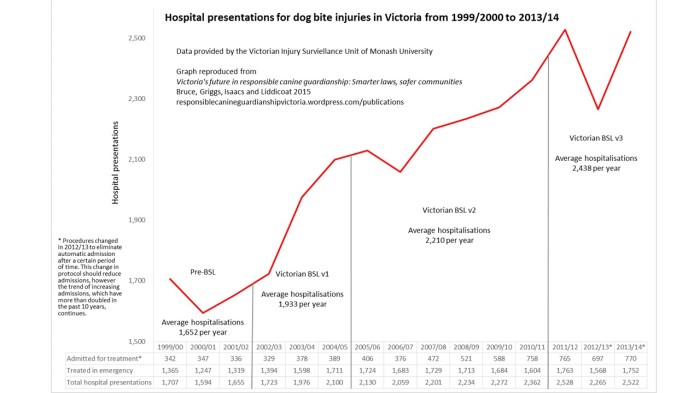Dog bite injuries have increased significantly since breed specific legislation was introduced in Victoria, according to hospital records.
Concerningly, the number of people admitted to hospitals for treatment (as opposed to being treated in the emergency department) has more than doubled to 770 in 2013/14. At 43 injuries per 100,000 people in 2013/14 Victoria has a dog bite injury rate of more than twice that of Calgary when their responsible pet ownership model was introduced.
Seven people a day present to hospital with dog bite injuries in Victoria, on average. Young children are most at risk of injury, particularly those under the age of four, and they are hurt predominantly in the head and face area.
When the three years prior to the first introduction of breed specific legislation in Victoria in 2002 are compared to the last three years, on average:
- total hospital visits have increased by 50%, resulting in an additional 786 presentations to hospital for dog bite injuries each year, and
- hospital presentations requiring admission for treatment have more than doubled from 342 to 744 per annum.
There is a correlation between increasing dog bite injuries and the key phases of breed specific legislation in Victoria. The average hospital presentations have increased each time the legislation was ‘improved’. While this highlights the ineffectiveness of restricted breed legislation, it also indicates simultaneous failures in other areas such as education.
If you are concerned about this increase, please make a submission to the parliamentary inquiry before Friday 10 July.

